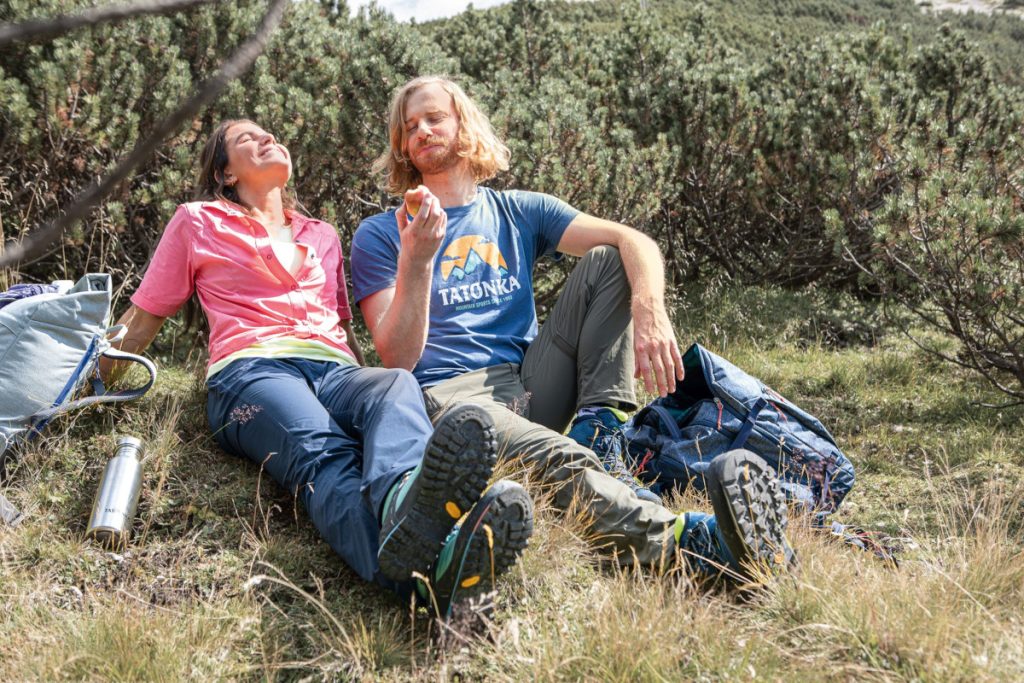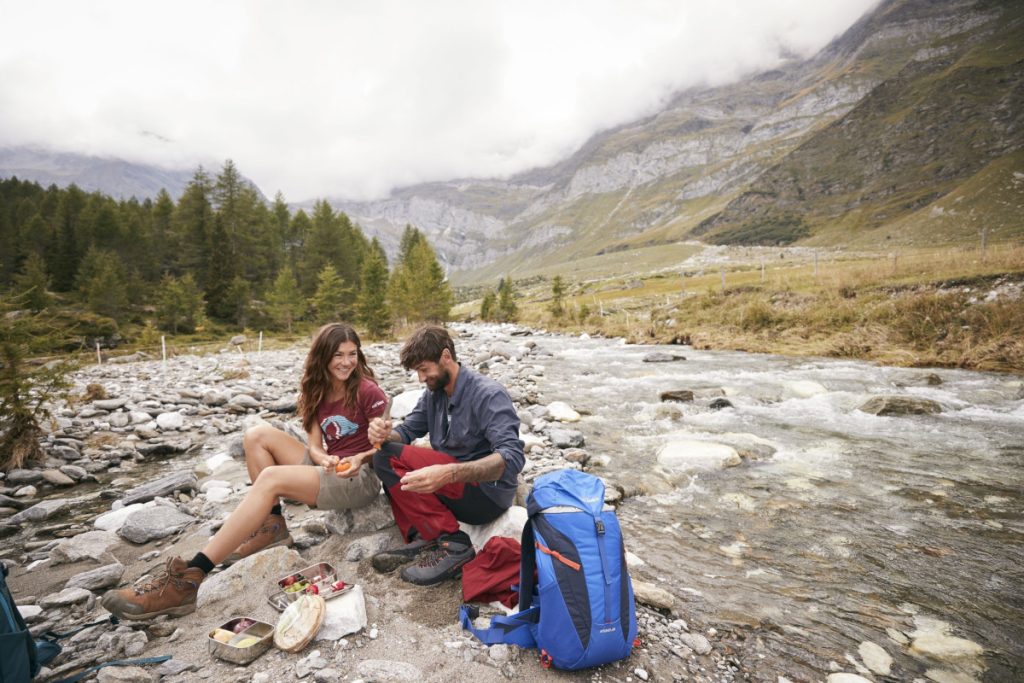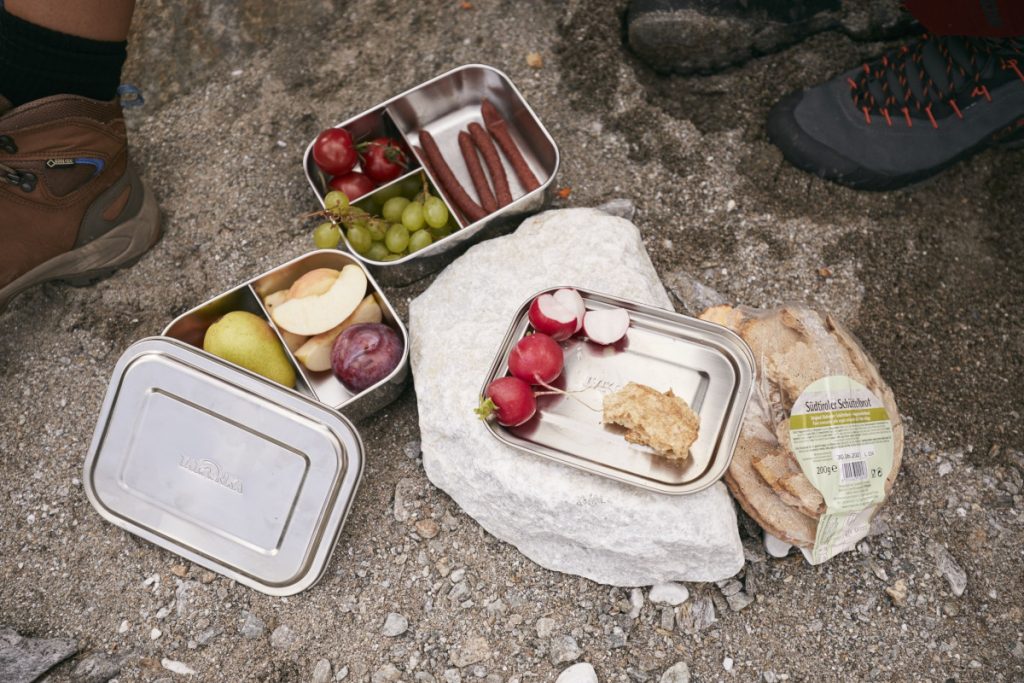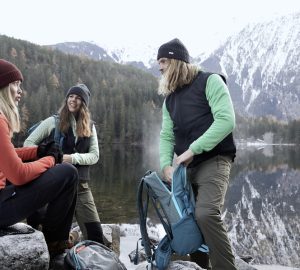Taking finger food on a hike is not a new idea. The good old cheese sandwich has certainly climbed a mountain peak or two as provisions in your backpack. However, there are countless other snacks that you can take along for hiking. Finger food is characterized – as the name suggests – by the fact that you don’t need any cutlery to eat it and can simply eat it with your hands. This makes it perfect for on the go. Whether with meat, vegetarian or vegan, experimentation is the name of the game! And one thing is for sure: it tastes even better in the fresh air while hiking.
Before every hike is the planning. In addition to route planning, the right equipment and clothing, the food should not be neglected.
Do you plan to stop for a bite to eat on your hike? Then it’s best to find out in advance whether there are any refreshment stops on your tour and whether they are open. If you want to take care of yourself on your hike, then we have put together a few suggestions for simple and practical snacks for you.
Tip: If you are planning a multi-day hike and want to take care of yourself, you can find all the important information in our guide to trekking food.

#1 Bars: Ideal for quick energy
Granola bars and other bars are the perfect snack for any hike. They provide quick energy and are very handy. But watch out: Most granola bars from the supermarket contain a lot of sugar. It’s worth taking a look at the sewing value table. Meanwhile, you can also buy bars with relatively little sugar and high-quality ingredients.
By the way, you can also make muesli bars yourself quickly and easily. All you need for something so delicious are the following ingredients:
- 140g of rolled oats mixed with flax seeds, chia seeds or other seeds of your choice.
- 60g chopped nuts of your choice
- 30g coconut oil
- 100g maple syrup, agave syrup or date syrup
- 1 pinch of salt
First, melt the coconut oil in a small saucepan. Then mix it with all the other ingredients in a large bowl. Spread the mixture evenly in a baking dish lined with baking paper and bake in the oven at 170 degrees for about 15 to 20 minutes. When the mixture is golden, remove it from the oven and, while it is still hot, cut it into bars with a knife. Let everything cool down, et voilà!
#2 Nuts – a handful of protein to go
Nuts are a concentrated source of energy. The kernels provide you with healthy fats, proteins and contain healthy fiber and vitamins. This applies to just about all types of nuts – whether walnuts, hazelnuts, cashews or peanuts, even if the proportions of the substances vary.
A nut mixture offers especially much variety. Mixed with raisins and other dried fruits, they also provide you with a quick supply of fructose if you’re feeling sluggish. In small portions, nuts are the ideal finger food for hiking.

#3 Fresh fruit whole and vegetables best as sticks
Many fruits are already finger foods by nature. Apple and banana are particularly popular.
But vegetables also make great finger foods for hiking. For example, cut carrots, peppers or cucumbers into handy sticks and pack them in a snack box. Yogurt with a pinch of salt and pepper in an extra container can be used as a dip from your backpack. This healthy snack is also delicious for children.
#4 Sandwiches – the classic
It doesn’t sound very spectacular at first, but this classic offers so many possibilities. There are almost unlimited possibilities for both the bread and the toppings. Wholemeal bread has a particularly high nutritional value and is therefore more suitable for hiking than white bread. It keeps you full longer.
You can get creative with the toppings. There are now countless vegan and vegetarian toppings. Depending on your preferences, you can also top your bread with sausage and cheese.
Tip: In a lunch box with dividers, you can store your bread together with vegetable sticks without making a big mess after a few hours of hiking.

#5 Homemade spreads
Spreads can also be homemade without much effort and are immediately something very special! How about a potato spread, for example?
Boil 150g of potatoes until they are soft. Then peel them and mash them into mashed potatoes. Mix the mashed potatoes with a cup of yogurt and a cup of sour cream. Refine the spread with salt, bell pepper, paprika powder and chives.
You can also create a variety of spreads with cream cheese. A little research is worthwhile!
#6 Wraps – new energy from the roll
If you don’t feel like sandwiches, you can also take wraps with you on your hike. They’re easy to prepare and, with the right filling, provide just the energy you need for hiking. You can make the dough yourself, of course, but there is also the ready-made version from the supermarket.
In addition to lettuce and vegetables cut into strips, you can fill your wrap with falafel, fried halloumi cheese or fried chicken strips. For an extra portion of protein, spread some hummus on your dough before rolling up your wrap. Use sauces, such as yogurt, sparingly so your wrap doesn’t get soggy.
Before you put your wraps in a lunch box, you can wrap them with some kraft paper to prevent them from rising.
#7 Boiled eggs – don’t forget the salt shaker
If you have animal products on your menu, you can boil eggs the night before your hike and take them with you. The protein they contain – most of it is found in egg yolks, by the way – will give your muscles, strained by hiking, new strength. Real gourmets pack a salt shaker in their backpacks.

#8 Sweets – best homemade
We don’t want to hide the fact that sweets – especially too many of them – are not healthy. However, if you exercise a lot, you can treat yourself to something. If, for example, you get into a bit of a low mood after a strenuous climb or in bad weather, something sweet can be just the thing to lift your spirits. So packing a chocolate bar, some gummy bears or something similar is always a good idea.
As always, you can also bake something yourself. The advantage: you decide which ingredients and how much sugar you use. Muffins are especially good as a sweet snack on hikes. They are easy to store and handy to eat – finger food.
Don’t forget to drink
Now that we’ve talked a lot about food, don’t forget about drinks. Don’t forget to take enough liquids with you, because your body needs a lot of them, especially during exertion. On hot days you can use a thermos bottle, so that your water is still refreshingly chilled after a few hours.
Fruit tea is also a popular drink among hiking fans. In a thermos, it stays hot all day and can sweeten your break immensely – together with something home-baked.







